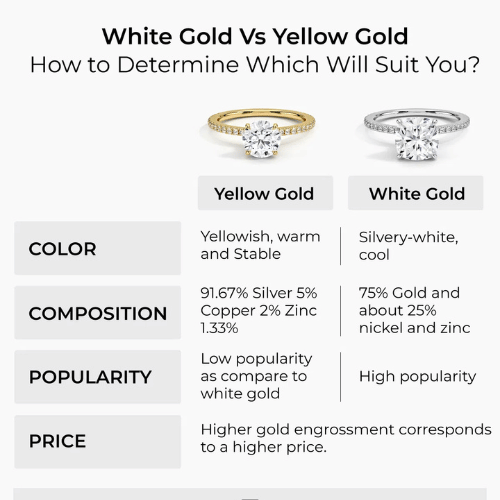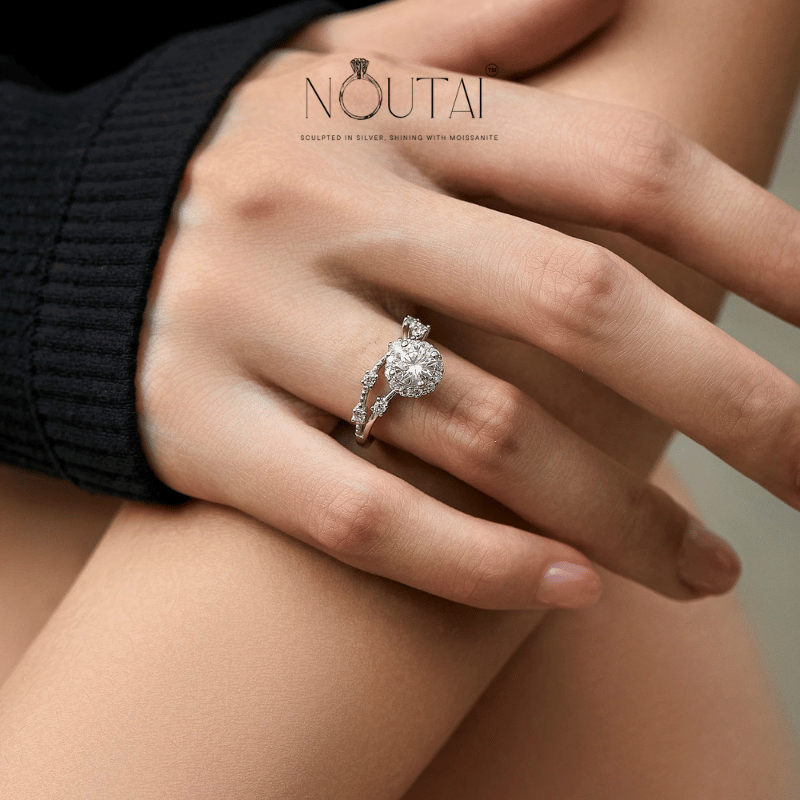When shopping for a diamond, whether it's a lab-grown diamond or moissanite, one common question people often ask is: "What diamond shape looks the biggest?" While carat weight measures the actual size of a diamond, the perceived size—how large it appears to the eye—can vary greatly depending on the shape. In this guide, we'll explore which diamond shapes appear larger and how they compare in terms of size, sparkle, and value.
Diamond Shapes That Look the Biggest for Their Carat Weight
Not all diamond shapes display their carat weight equally. Some shapes distribute their weight in ways that maximize face-up appearance, making them look larger than other shapes of the same carat weight. Here’s a breakdown of the most popular shapes and how they rank in terms of perceived size:
Marquise Diamonds: Maximum Visual Impact
The marquise diamond shape typically looks the largest per carat. Its elongated, boat-shaped cut with pointed ends features a large surface area visible from the top, making it appear much larger than a round brilliant diamond of the same carat weight.
Why Marquise Diamonds Look Bigger:
-
The elongated shape creates a larger surface area.
-
The tapered ends extend the length of the diamond.
-
The narrow width allows the carat weight to be spread along the length.
Oval Diamonds: Elegant Elongation
The oval diamond shape is another great option if you’re looking for a diamond that appears larger. The elongated shape creates a bigger face-up appearance compared to round diamonds of the same carat weight, offering a timeless appeal with the sparkle of a round diamond and the size benefits of an elongated cut.
Why Oval Diamonds Look Bigger:
-
Approximately 10% larger face-up appearance than round diamonds of equal weight.
-
The elongated form creates the illusion of greater size.
-
No pointed edges that might be prone to chipping.
Pear Diamonds: The Best of Both Worlds
The pear diamond (also called teardrop) combines elements of both the marquise and oval cuts, featuring one rounded end and one pointed end. This hybrid shape creates a beautiful size appearance for its carat weight while offering a unique, stylish look.
Why Pear Diamonds Look Bigger:
-
Elongated form creates a larger surface area.
-
The tapered end extends the diamond’s length.
-
The asymmetrical shape draws the eye along the entire length.
Emerald Diamonds: Sophisticated Step-Cuts
The emerald diamond features a rectangular step-cut with trimmed corners, creating a "hall of mirrors" effect. While emerald cuts don’t have the same sparkle as brilliant cuts, their large open table (top facet) creates an impressive size appearance and highlights the diamond's clarity.
Why Emerald Diamonds Look Bigger:
-
The large, open table shows more surface area.
-
The rectangular shape elongates the appearance.
-
The step-cut facets create depth and drama.
Radiant Diamonds: Brilliant Rectangles
The radiant diamond combines the rectangular or square outline of the emerald cut with the brilliant faceting pattern of a round diamond. This hybrid cut offers both great size appearance and exceptional sparkle.
Why Radiant Diamonds Look Bigger:
-
Rectangular shape provides more surface area than round cuts.
-
Trimmed corners give the illusion of a larger size.
-
Brilliant faceting creates vibrant fire and scintillation.

Classic Diamond Shapes with Timeless Appeal
While the shapes above maximize perceived size, other classic diamond shapes have their own appeal in terms of brilliance, versatility, and timeless beauty.
Round Brilliant Diamonds: The Sparkle Standard
The round brilliant diamond shape is the most popular and traditional choice. While round diamonds don’t maximize face-up size, they offer unmatched brilliance and fire due to their ideal 58-facet pattern that maximizes light return.
Size Appearance:
Round diamonds tend to have smaller face-up appearances than fancy shapes of the same carat weight, but they compensate with superior sparkle.
Princess Diamonds: Square Brilliance
The princess diamond shape features a square outline with pointed corners and a brilliant faceting pattern. This modern cut offers a good balance between unique shape and impressive sparkle.
Size Appearance:
Princess cuts have a larger face-up appearance than round diamonds of equal weight, but they do not offer the same illusion of size as elongated shapes.
Cushion Diamonds: Soft and Romantic
The cushion diamond shape has rounded corners, resembling a pillow. This classic cut has been popular for centuries and offers a romantic, soft appearance.
Size Appearance:
Cushion cuts vary in size based on their length-to-width ratio, with more elongated cushions appearing larger than square ones.
Asscher Diamonds: Vintage Geometry
The Asscher diamond is a stepped square cut, creating an octagonal appearance. It features a hall-of-mirrors effect but with a square shape, offering a unique vintage appeal.
Size Appearance:
Asscher cuts have a smaller face-up appearance compared to other shapes, despite their vintage charm.
Heart Diamonds: Symbolic Expression
The heart diamond shape is a specialized cut featuring a distinctive heart outline. While challenging to cut properly, a well-proportioned heart diamond offers both symbolic meaning and impressive sparkle.
Size Appearance:
Heart shapes generally have a good face-up appearance but require larger carat weights (typically 0.75 carats and above) to properly display the heart shape detail.
Factors That Affect How Big a Diamond Looks
Besides the diamond shape, several factors influence the perceived size of a diamond:
-
Diamond Cut Quality: A well-cut diamond reflects light more effectively, making it appear larger and more brilliant. Poorly cut diamonds may appear smaller despite their actual carat weight.
-
Length-to-Width Ratio: For fancy shapes, the length-to-width ratio impacts perceived size. More elongated stones (higher ratios) generally appear larger than more square or circular shapes of equal carat weight.
-
Setting Style: The setting can dramatically influence how large a diamond appears:
-
Halo settings surround the center stone with smaller diamonds, making the center stone appear up to half a carat larger.
-
Bezel settings may make stones appear smaller as metal surrounds the entire edge.
-
Prong settings maximize light entry and minimize metal coverage, enhancing apparent size.
-
-
Metal Color: White metals like platinum or white gold make diamonds appear larger by creating a seamless visual flow between the metal and diamond. Yellow or rose gold can create more contrast, sometimes making the diamond’s boundaries more defined.
What Diamond Shape Looks the Biggest & Which Is Right for You?
When choosing the perfect diamond shape, consider these factors beyond just which shape looks the biggest:
-
Personal Style: The shape that resonates with you personally is always the best choice.
-
Lifestyle and Practicality: Active lifestyles might benefit from shapes without pointed edges that could chip or snag.
-
Finger Shape and Size: Certain diamond shapes complement different finger shapes and hand sizes.
-
Budget: Fancy shapes like oval and marquise are often less expensive per carat than round brilliant cuts.
Conclusion: What Diamond Shape Looks the Biggest?
Ultimately, the best choice depends on your preferences, lifestyle, and budget. Whether you choose the maximum visual impact of a marquise or oval shape or the timeless brilliance of a round diamond, rest assured that all these shapes deliver excellent quality, brilliance, and value.



